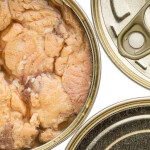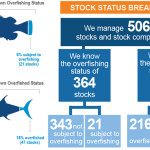Indian farmed shrimp exporters are defending the safety of their products after a European report called attention to banned antibiotics in the country's shrimp sector.
The European Commission’s Directorate General for Health and Food Safety's recent report “shows the extensive, unique controls that the Indian government has installed to safeguard against exporting shrimp contaminated with antibiotics to the European Union," said U.S. domestic shrimp organization Southern Shrimp Alliance (SSA) in a statement.
However, the report “also reveals why massive quantities of Indian shrimp have been directed to the U.S. market, where no comparable controls are required,” according to the SSA.
“Despite all of the additional controls in place to eliminate antibiotics from shrimp exported to the European Union from India, the integrity of the system is undermined by the widespread availability of antibiotics in India,” SSA said. “Even more disturbingly, a number of antibiotics which are banned for use in food-producing animals in the European Union are ‘freely available on the Indian market and may be purchased over the counter,' but are not tested for at any stage of the supply chain.”
The European Union’s Rapid Alert System for Food and Feed has 13 notifications for nitrofurans found in Indian shrimp through October, according to SSA. The trade group contends that most of the controls and requirements in place for Indian shrimp exports to the European Union do not exist in the United States.
“At most, a U.S. importer of Indian shrimp need only have evidence that its Indian supplier maintain a HACCP program,” the organization said.
India is the largest single supplier of shrimp to the United States, accounting for 35.2 percent of the value of all shrimp imports into the country last year at USD 2.2 billion (EUR 1.9 billion).
“The E.U.’s audit report confirms our worst fears,” SSA Executive Director John Williams said in the statement. “The inability of our food safety regulatory system to deal with the problem of the indiscriminate use of antibiotics in aquaculture has made the United States a dumping ground for contaminated shrimp. The U.S. shrimp industry was devastated 15 years ago when massive amounts of cheap, contaminated Chinese shrimp was re-directed to this market. The federal government cannot allow history to repeat itself.”
The European report proves that “stringent checks and testing protocols have been implemented by the Indian governmental authorities to test shrimp for antibiotics,” said Sea Food Exporters Association of India (SEAI) in a statement provided to SeafoodSource.
“It is these checks and protocols that ensure that antibiotic free products are shipped from India to the United States too,” the association said.
In fact, many retail and foodservice companies within the United States mandate additional testing for banned antibiotics in shrimp, conducted by third-party laboratories, in addition to the mandatory testing requirements of the Government Regulatory Authority in India, SEAI said.
In addition, FDA’s testing has been stepped up and is more frequent in the past 12 to 18 months, according to SEAI. Numerous containers are being tested and released.
The U.S. government’s refusal of imported shrimp for reasons related to banned antibiotics is likely to hit its lowest level in years in 2018, SSA acknowledged. In November, 6.6 percent of the total seafood entry line refusals were shrimp for reasons related to banned antibiotics, according to the U.S. Food and Drug Administration.
“So far this year, there has been a total of 47 shrimp entry lines refused for reasons related to banned antibiotics. Absent a significant change in trends in December, the FDA is likely to report the smallest number of shrimp entry lines refused for banned antibiotics since 2006,” SSA said in a separate statement.
“FDA refusals on account of antibiotics are insignificant compared to the volume of imports, as is the case in Europe [where there were] 14 rejections out of 1,600 tested in last year,” SEAI said.
Rather than lax controls, India’s exports to the U.S. have been growing over the last few years “on the strength of its expanding the production across India as compared to other producing nations,” SEAI said. “India has demonstrated that its ability to produce and supply consistently makes it a preferred supply source.”
Image courtesy of the Sea Food Exporters Association of India






